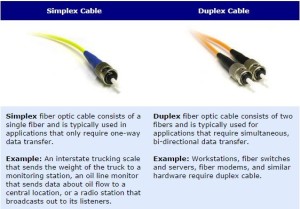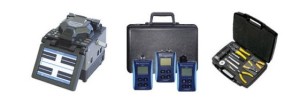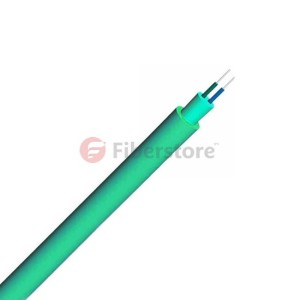How Does it Works?
We can think it as digitized information is “coded”, or placed on light pulses for transmission. The information travels along the glass fiber at the speed of light(186,000 miles/second). When it reaches its destination, a decoder converts the light information into a picture, audio.
Fiber Optic Cables consisit of the following components:
- Core – Transparent plastic or glass through which light travels
- Clading – Glass covering surrounding the core that acts as a mirror to reflect light back into the core. This is called total internal reflection
- Buffer coating – Coats and protects the fiber
- Aramid yarn strength member – Reinforces the integrity of data transmission through the optical fibers in the cable.
- Protective outer jacket – Ectruded PVC is typical
Fiber Cable Designs
There are two basic types of cable design. They are: Loose Tube (typically used for “OSP” outside plant installations) and Tight Buffered (typically used for inside installations).
Loose Tube fiber cable consists of: (shown as the right figure)
- Multiple 250µm coated fibers
- One or more loose tubes holding those fibers
- Gel-fill to block moisture and protect movement of the fibers
- Central strength member
- Aramid yarn strength member
- Outer jacket
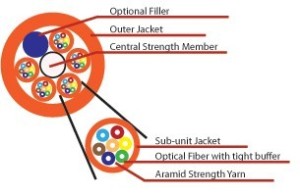 Tight Buffered fiber cable consists of (shown as the left figure):
Tight Buffered fiber cable consists of (shown as the left figure):
- 900µm tight buffer around a 250µm fiber
- Central Strength member
- Aramid yarn strength member
- Outer jacket
Fiber Cable Types
There are two basic types of cable. Simplex and Duplex. Both types of cable come in: Singlemode and Multimode. Singlemode is for long distance cable runs and Multimode is for shorter cable runs.
Fiber Optic Tools and Test Equipment
With every fiber install, special tools and equipment are required to complete the job. Fiberstore recommends the following Fiber Optic tools and equipment from Fusion Splicers to test kits.
Fiber Optic Splitters
A Fiber Optic Splitter combines light signals and splits them out over single or multiple outputs. Fiberstore splitters are immune to electro-magnetic interference (EMI), consume no electrical power, and do not add noise to system design. Fiberstore splitters can be fabricated in custom fiber lengths and with any type of connector.
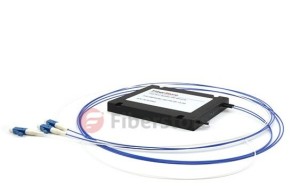 Fiberstore is a professional fiber products store in the fiber optics dustry, it supplies all kinds of above fiber optical products in the article, and there is a good news it that it is doing 30% discount of the before price, if there are some needs, Fiberstore is a quite good choice.
Fiberstore is a professional fiber products store in the fiber optics dustry, it supplies all kinds of above fiber optical products in the article, and there is a good news it that it is doing 30% discount of the before price, if there are some needs, Fiberstore is a quite good choice.



